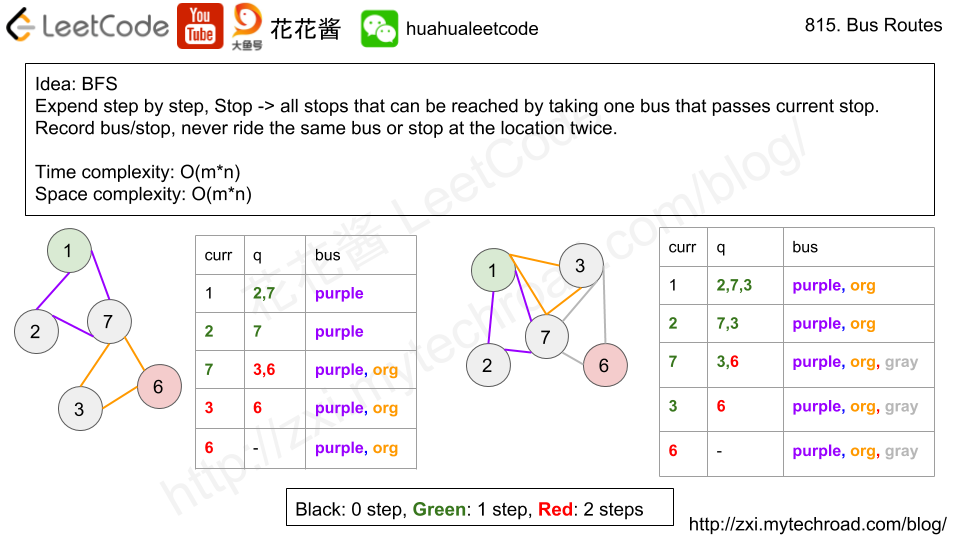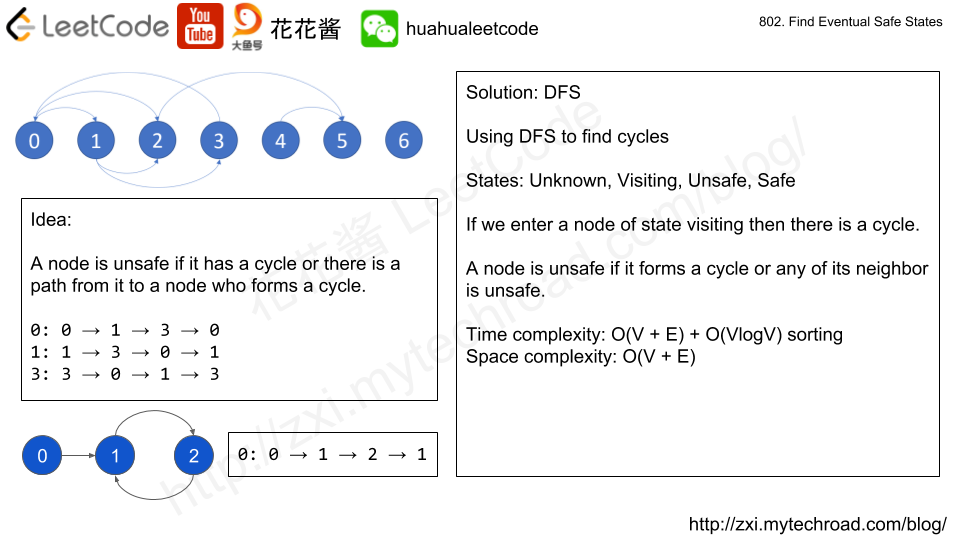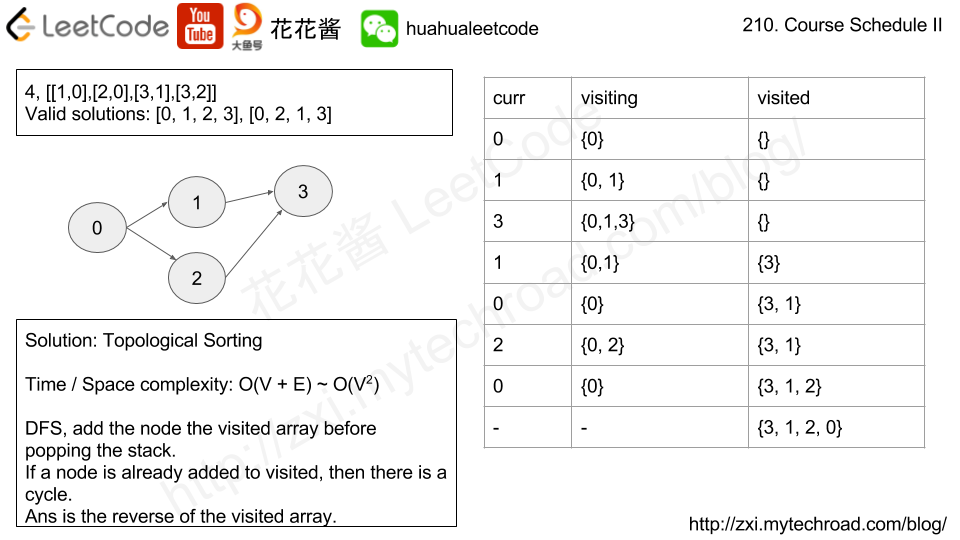Problem
题目大意:给你每辆公交车的环形路线,问最少需要坐多少辆公交车才能送S到达T。
https://leetcode.com/problems/bus-routes/description/
We have a list of bus routes. Each routes[i] is a bus route that the i-th bus repeats forever. For example if routes[0] = [1, 5, 7], this means that the first bus (0-th indexed) travels in the sequence 1->5->7->1->5->7->1->… forever.
We start at bus stop S (initially not on a bus), and we want to go to bus stop T. Travelling by buses only, what is the least number of buses we must take to reach our destination? Return -1 if it is not possible.
Example: Input: routes = [[1, 2, 7], [3, 6, 7]] S = 1 T = 6 Output: 2 Explanation: The best strategy is take the first bus to the bus stop 7, then take the second bus to the bus stop 6.
Note:
1 <= routes.length <= 500.1 <= routes[i].length <= 500.0 <= routes[i][j] < 10 ^ 6.

Solution: BFS
Time Complexity: O(m*n) m: # of buses, n: # of routes
Space complexity: O(m*n + m)
C++
|
1 2 3 4 5 6 7 8 9 10 11 12 13 14 15 16 17 18 19 20 21 22 23 24 25 26 27 28 29 30 31 32 33 34 35 |
// Author: Huahua // Running time: 89 ms class Solution { public: int numBusesToDestination(vector<vector<int>>& routes, int S, int T) { if (S == T) return 0; unordered_map<int, vector<int>> m; for (int i = 0; i < routes.size(); ++i) for (const int stop : routes[i]) m[stop].push_back(i); vector<int> visited(routes.size(), 0); queue<int> q; q.push(S); int buses = 0; while (!q.empty()) { int size = q.size(); ++buses; while (size--) { int curr = q.front(); q.pop(); for (const int bus : m[curr]) { if (visited[bus]) continue; visited[bus] = 1; for (int stop : routes[bus]) { if (stop == T) return buses; q.push(stop); } } } } return -1; } }; |


